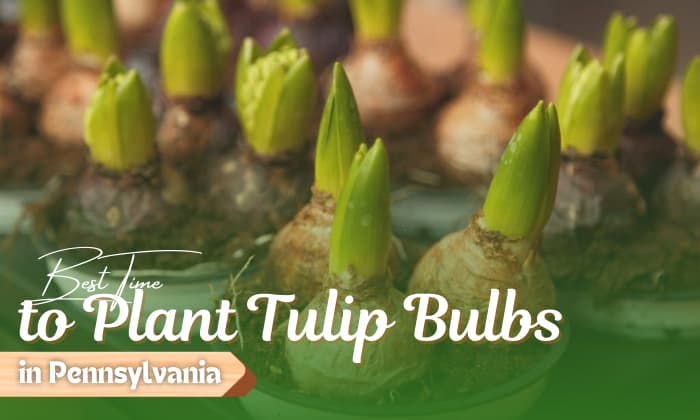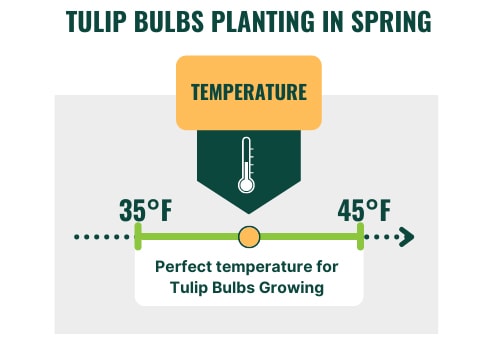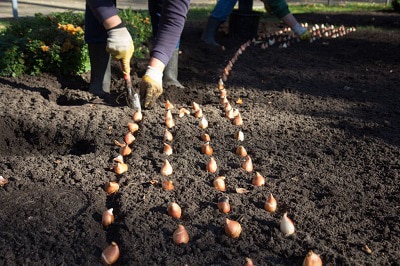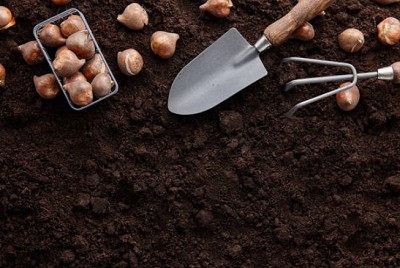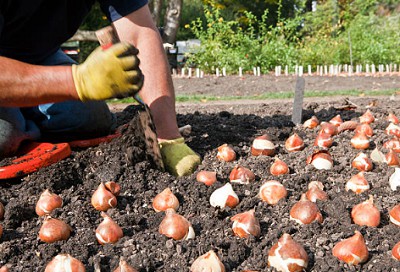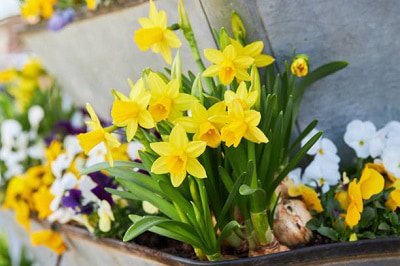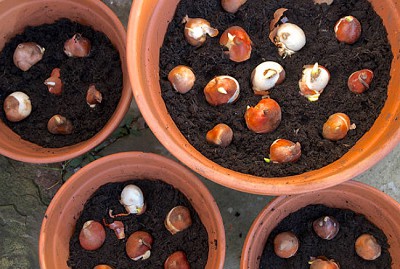As a gardening enthusiast in Pennsylvania, one should know the importance of determining when to plant tulip bulbs in Pennsylvania to be rewarded with a stunning display of vibrant and beautiful spring flowers!
In PA, climate and weather patterns have an important role in tulips’ ideal growing season. Based on hardiness zones, gardeners can plant them during September, or from November to December, aiming for late fall or early winter.
Let’s learn more below!
Table of Contents
The Best Time to Plant Tulip Bulbs in Pennsylvania
A garden of beautiful tulips is absolutely fitting for the cool climate of Pennsylvania.
Ideally, it is recommended that you plant them in the middle of the fall so that you can watch them bloom in the spring!
1. When to Plant Tulips Depending on USDA Hardiness Zones
Pennsylvania is composed of different parts, and each part’s climate would differ from one another. We will place these parts in hardiness zone categories so that we will be able to determine how well your tulips will grow in different climatic conditions.
The USDA hardiness zones of Pennsylvania range from 5 to 7.
There are zones that might be too cold for you to start planting your tulips at a particular time of the year. Hence, it’s best to adjust and pick the optimal date. Look up the first frost where you live and count backward six to eight weeks to get the gardening time. This will help answer the question “is it too late to plant bulbs?” if this is your concern.
In zone 5, the first frost is around mid-October, so tulip planting in September makes sense.
If we’re talking about zone 6, you can benefit more by planting your tulips from mid-November to December.
For Pennsylvania’s zone 7, similar to zone 6, gardeners are able to plant their tulips in late fall or early winter, which range from November to December.
2. Tulip Bulbs Planting in Spring
While fall is an ideal time to plant your tulips, doing so in spring is definitely worth trying. If you’ve got spring bulbs to plant, then why not?
It’s something to note, however, that starting this journey will have more challenges compared to planting them in the fall. It’s because spring doesn’t exactly have the kind of climate that would stimulate the growth of tulip roots in order to have them established.
But don’t lose hope! Early spring bulbs will have high chance of successful blooming if you put them in a pot with soil and refrigerate the tulips under 35 to 45℉ for ten to twelve weeks.
After the cold treatment period, remove the bulbs from storage and put them in a cool area of the home, then to a spot with direct sunlight and a temperature of 50 to 65 degrees.
5 Tips for Successful Tulip Bulbs Planting in Pennsylvania
1. Planting With the Right Spacing
When creating a garden, it is normal for us to want to see rows and rows of beautiful flowers together. But if we want our blossoms to be able to breathe, we have to make sure to give them the right spacing.
When planting, put at least 2 to 3 inches of space between two tulip bulbs. With this setting, they will grow into a full group of flowers!
If you want to speed up the planting process, a trick is to utilize a soil tarp. Here’s how you can use it with these quick steps:
- Make a hole in the soil, about six to eight inches deep, then add the tulip bulbs inside.
- Place the discarded soil onto the tarp then slide and sprinkle it all over the exposed tulip bulbs.
2. Investing in High-Quality Soil
Once good soil is involved in the planting process, this greatly helps the gardener yield better results and the plants to be able to give themselves a treat!
Tulips would grow to their full potential if the surrounding soil isn’t too compact nor too wet to cause waterlogging.
If necessary, you may opt to add sand or gravel to improve drainage.
3. Providing a Sunny Environment
In order for your tulips to grow to their full potential, they must be given full sunlight daily.
Even if this is the case, we must also note that they must be shielded from the extremely hot sun, especially in warm or hot climates. This is too much for the flowers, and they might end up dying instead.
4. Preventing Vermin Attacks
There are plenty of ways you are able to do this. For example, having daffodils nearby is not only a wonderful addition to your garden, but also quite useful in deterring rodents as it is a flower that they tend to care less about.
A second tip would be creating a mesh made of wire gauge or bulb cages to put tulips in.
Worry not! As they grow, the barrier will not stop and hinder the flowers’ developing process.
5. Know Your Containers
The planting conditions of the tulips would differ depending on where they are being placed. If you want to grow them in containers or in pots, there are specific guidelines to make sure your tulips would thrive.
First, make sure the containers have drainage holes to prevent waterlogging, for this can kill your plant. You may use compost to amend compact soil that retains too much moisture while adding nutrients to the planting mix.
Watering whenever the soil feels dry is also essential.
Related:
Conclusion
As we conclude, knowing when to plant tulip bulbs in Pennsylvania is a gardener’s essentials in order to have a successful and vibrant display of spring blooms!
By planting in the fall, typically between September and November, also depending on your USDA hardiness zones, you are allowing the bulbs to establish their roots before winter begins. This ensures the necessary chilling period for their development.
Always remember the tips and guidelines so you can look forward to a stunning view of tulips in your Pennsylvania garden each spring!

Hi, I am William – Floridayards’ digital content creator. My job is to find answers to all your concerns with thorough research and our team’s expert advice. I will also bring you honest reviews on the best products and equipment for raising your beautiful garden. Please look forward to our work!


